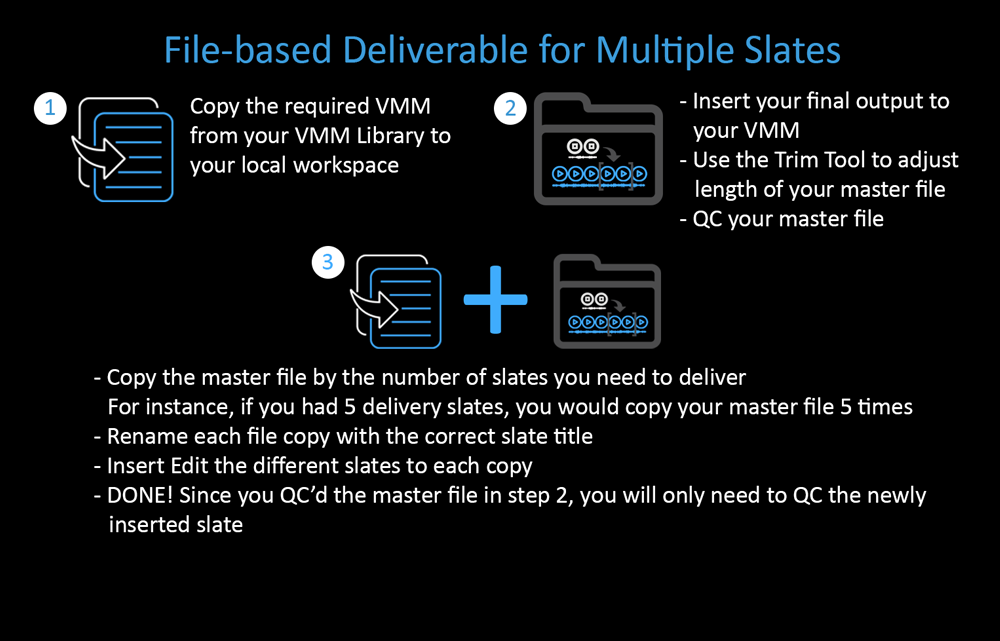Working with Cinedeck’s blacked file for delivery versioning during post finishing
 While there are many applications for Cinedeck’s File-based Insert Edit, perhaps the most beneficial is in the post finishing process, a notable aspect being versioning for multiple slate deliveries.
While there are many applications for Cinedeck’s File-based Insert Edit, perhaps the most beneficial is in the post finishing process, a notable aspect being versioning for multiple slate deliveries.
At its peak, tape workflows were the most streamlined process in post finishing for delivering multiple slates and versions. All of this changed suddenly with the tragic tsunami in 2011, which forced the industry to quickly adopt file-based workflows due to the constrained tape stock supply.
Today, almost all program deliverables are file-based; and while there are definite benefits to file-based workflows, there are limitations as well. Most efficiency limitations for file-based workflows stem from the inability to change the master flat file once it’s been exported or rendered. Take the simple example of different slates for different customers. For every slate change, you need to re-render/re-export the entire program AND you need to QC each file.
With Cinedeck’s File-based Insert Edit, we’re improving the efficiency of file-based workflows by applying the capabilities of tape. Create a library of VMM – Virtual Mastering Media – that is analogous to a library of pre-striped black tapes. Since VMM are pre-striped black “files”, you only create your VMM library once. Thereafter you simply copy the VMM you need for your project to your local work-space. In addition, creating a VMM is faster than real-time. Depending on codec and bandwidth, it can be as fast as 1/10th real-time.
Insert your program to a VMM to create the master file – Copy the VMM for as many deliverables as are required and insert the appropriate slates. Deliverables with multiple slates can be completed within minutes, not hours, because File-based Insert Edit allows you to simply drop-in the new slate to a finished flat file. Not only do you save time in the rendering / exporting process for each successive slate change, you also save the time that you would have devoted to QC-ing each file.

